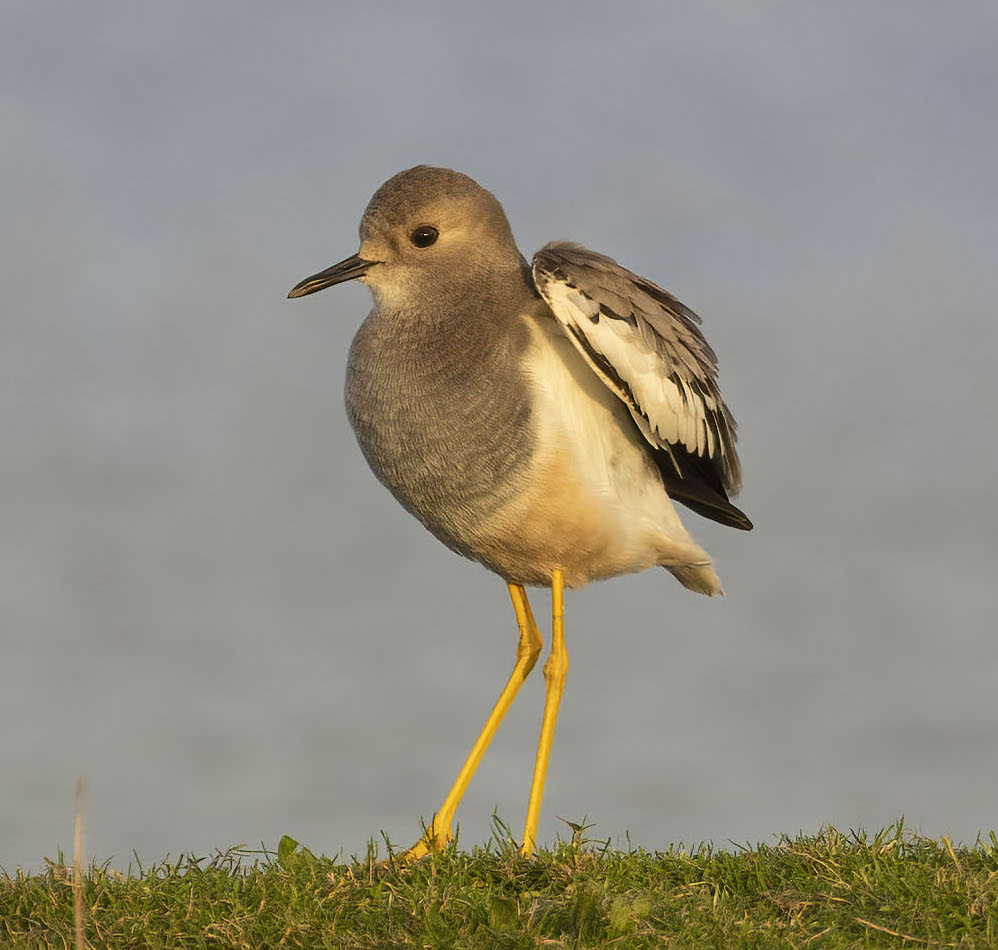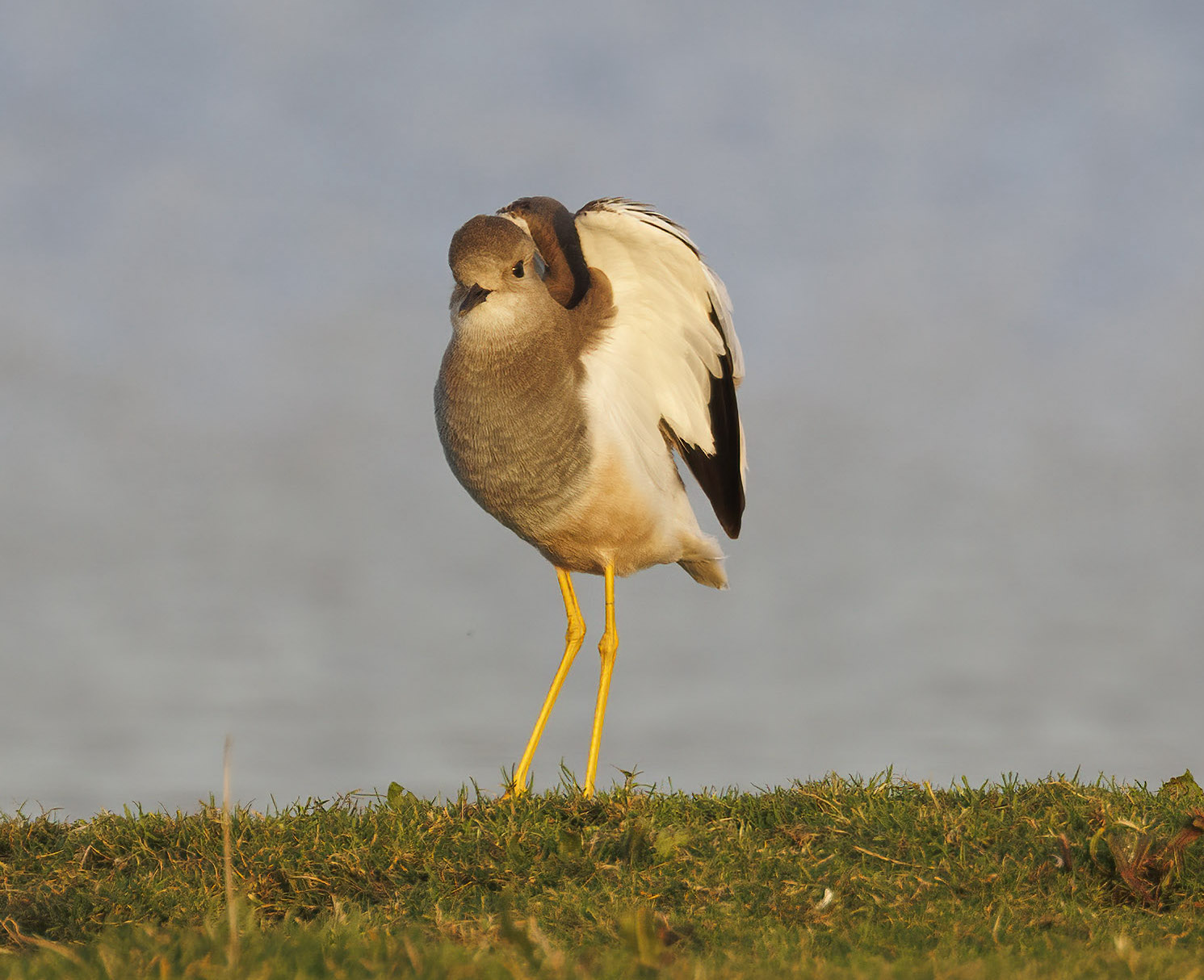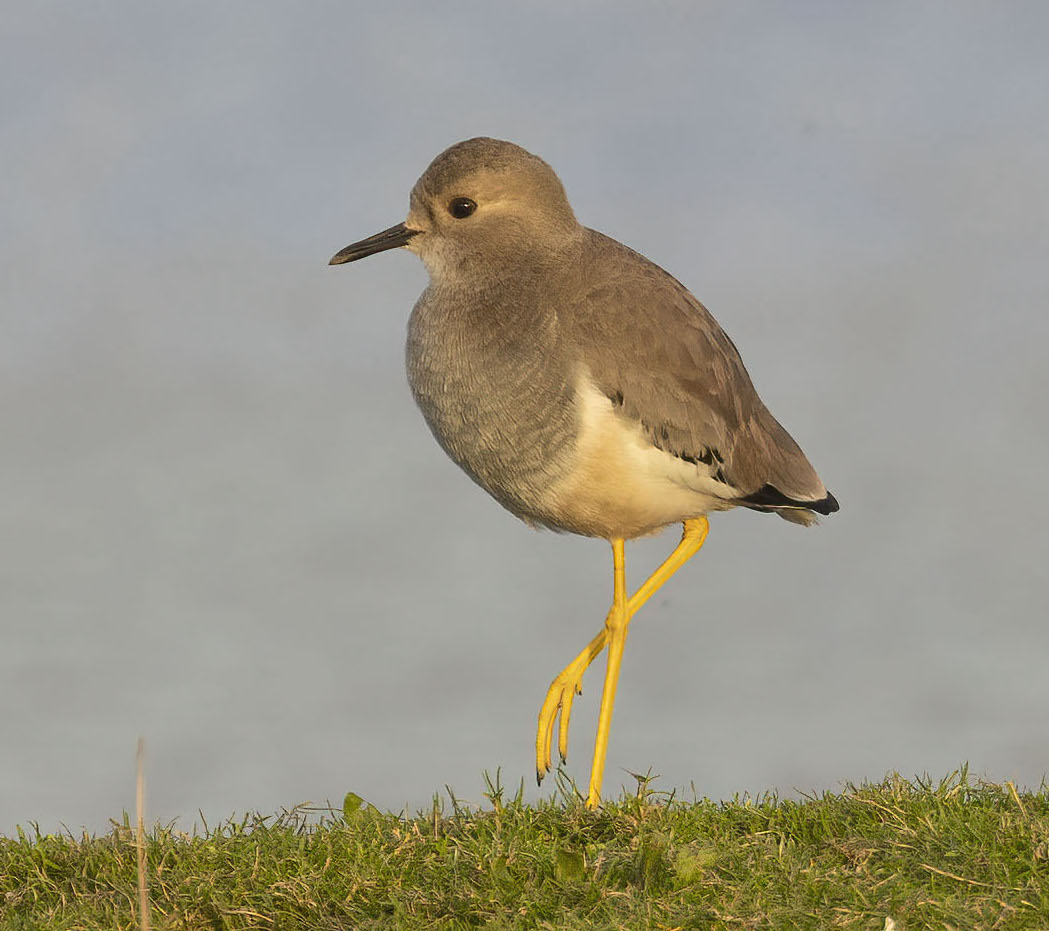White-tailed Lapwing Vanellus leucurus
Vagrant. Turkey and Middle East to Asia.



After an unidentified wader with yellow legs was reported at Winters Pit, East Halton a visit to check this report revealed a White-tailed Lapwing on the small grass field, presumed the same bird that many birders had been watching at Blacktoft Sands. The bird stayed in the same area along the edge of the grazed grass field by the pit until dark just walking occasionally and pecking at the ground. The following day it moved even less in its chosen floodwater pool but seemed to be in good condition and plumage, and later it settled down on the wet grazing fields just to the west. The bird stayed in the county well into 2022 and eventually moved to Frampton Marsh and to Rimac, Saltfleetby-Theddlethorpe NNR. It was seen last there on May 28th, 2022. Remarkably, but typical of previous UK records, this bird is believed to have moved to Snettisham, April 9th-10th 2022, and then on to Hickling, Norfolk May 23rd-24th 2022 prior to returning to Saltfleetby-Theddlethorpe NNR on May 26th (or were there two birds?).
| Site | First date | Last date | Count | Notes |
| East Halton marshes | 31/12/2021 | 06/03/2022 | 1 | |
| Frampton Marsh | 09/03/2022 | 04/04/2022 | 1 | Same as East Halton bird |
| Saltfleetby-Theddlethorpe NNR | 26/05/2022 | 28/05/2022 | 1 | Same as East Halton and Frampton bird |
Finder’s report: White-tailed Lapwing, Vanellus leucurus, December 31st, 2022, first county record.
by Graham Catley.
Note: this account is based on the original BBRC submission, and was first published in Lincolnshire Bird Report 2021. The BBRC report for 2021 noted that this was Britain's 7th record and that despite their rarity, vagrant White-tailed Lapwings have a tendency to wander and the birds in 2007, 2010 and 2021 all stopped off in multiple recording areas. The initial, brief sighting (June, Kent) was presumed to be the same bird throughout 2021 but some weeks later the bird was rediscovered at Blacktoft Sands, a first record for Yorkshire. It stayed until December, before hopping over to Lincolnshire for the final 24 hours of 2021. Not surprisingly, this widely admired bird was Britain’s longest-staying White-tailed Lapwing.
Circumstances
It’s Friday December 31st, 2021, and with my daughter at home for a couple of weeks and the weather having been rather dire, Friday's forecast was a lot better, so I suggested a drive to Spurn and a walk to the Point and back, not birding just for some exercise and atmosphere. At 06:30 Sophie goes out for her usual 5km. run but returns having lost the set of house keys she took with her. We walk the 5km route twice but to no avail so phone a colleague who fortunately has two door locks available, and he offers to come round and do them in an hour. By this time of course it’s getting late for a Spurn trip, and we are likely to miss the walk back due to high spring tides and thus we opt for a walk down the Ancholme seeing some Pink-footed Geese and Goosanders and a nice male Stonechat. When I get back and I am getting changed for the day at 14:17, I get a WhatsApp from Steve Routledge (Afternoon, wader at Winters with Yellow legs apparently, I'm at Scarborough so can't check unfortunately). Its only 12 miles from me and if this is the missing Lesser Yellowlegs, seen there two weeks previously, I have about 90 minutes to get there and look for it. In the event I get there in 20 minutes and no-one else is present apart from an elderly lady walking her dogs. I look out of the car window across the small grass field next to the pond and there stood on the edge is the White-tailed Lapwing Vanellus leucurus that we have been looking for at Alkborough for weeks, hoping it would hop across from Blacktoft Sands. I grab the camera and take a few shots before it flies but it doesn't, it just walks up and down there to dark; four others get there in time to see it before darkness descends.
We all say it’s a matter of effort but luck, chance, fate whatever still plays such a big part; if we had been at Spurn I would not have got there, and no-one would have seen it in the obvious location it was in apart from the two photographers who had seen it but had no idea what it was. The following morning all the Lincs listers were there at first light and gave up two hours later not even having looked nearby. Steve Routledge and his mate did look at the nearby mitigation pools but then went off to look at some flooded pig fields. I decided to check the mitigation pools again as anyone can miss something that skulks in clumps of rush and first scan with the bins, I saw a grey and beige shape hidden in the rushes.
Description
Basically, a Lapwing-sized Vanellus plover with extraordinarily long bright yellow legs; bill fine and black, head beige/buff/brownish-grey with slightly paler supercilia; eye dark with coral orbital ring; chin and throat creamy-white, breast and neck pale vinous–grey, lower breast and belly tinged salmon pink, paler and creamier along the flanks. Upperparts mid-earth brown with white tips to tertials forming pale fringe to closed wing with black tips of flight feathers beyond this fringe on closed wing. Tail seen to be white and underwing coverts bright white when wings raised with primaries seen to be black but not seen in flight at this location so rest of flight pattern not seen. Legs bright yellow.
The bird stayed in the same area along the edge of the grazed grass field by the pit until dark just walking occasionally and pecking at the ground. The following day it moved even less in its chosen floodwater pool but seemed to be in good condition and plumage.
Post-script: A first for the county and well done to all involved in the find (Mike Pickwell) and the follow-up and identification (Steve Routledge and Graham Catley). As we all know, the bird stayed in the county well into 2022 and eventually moved to Frampton Marsh and (presumed same bird) lastly turned up at Saltfleetby-Theddlethorpe NNR. It was seen last there on May 28th, 2022.
(Account included December 2022)

